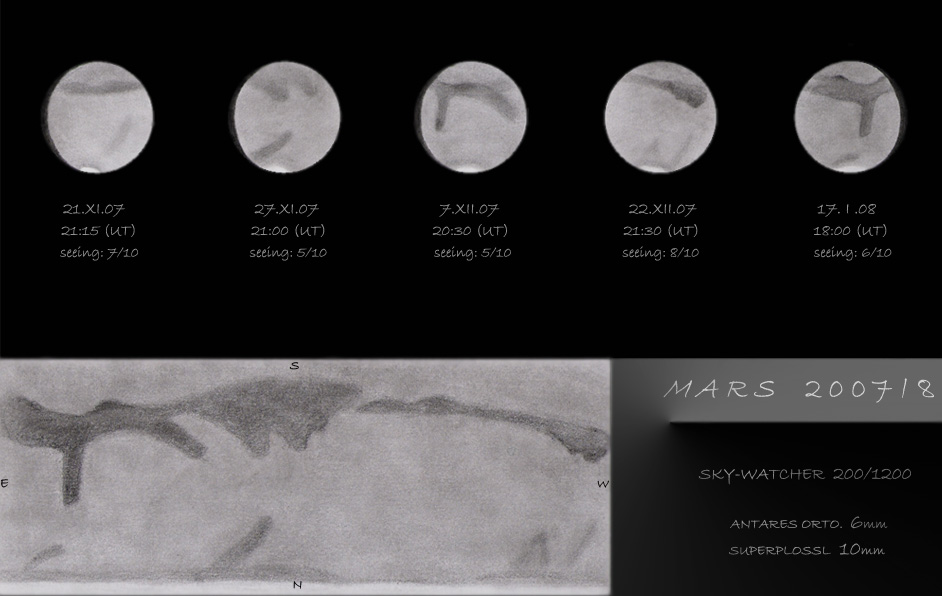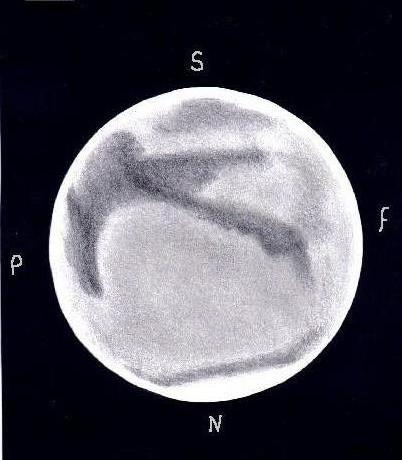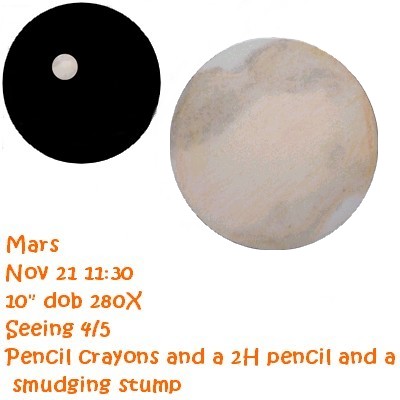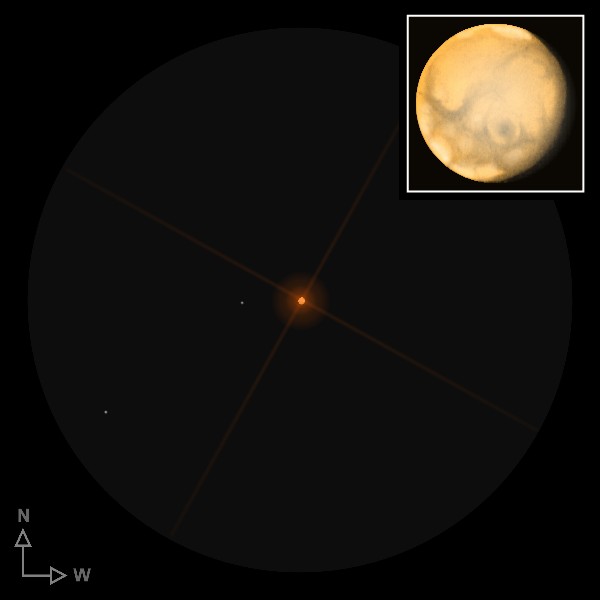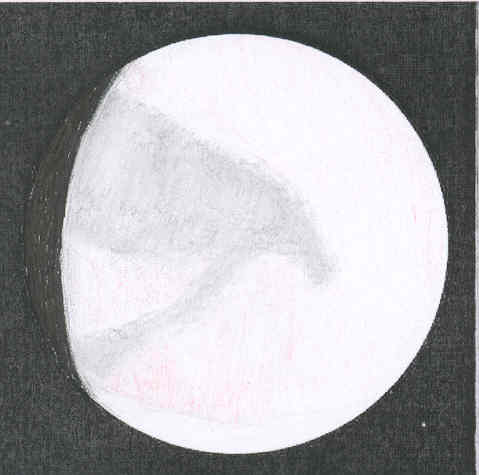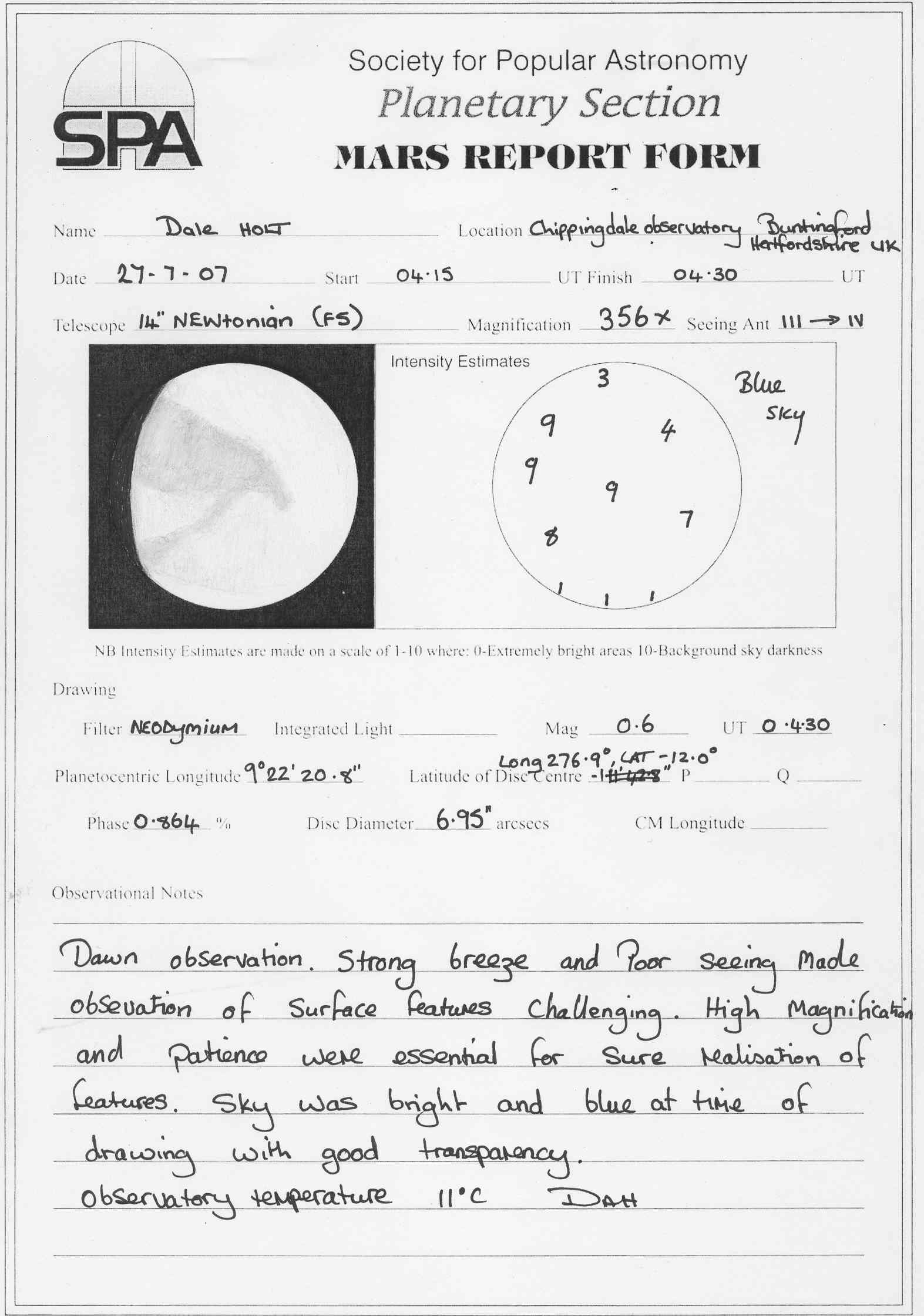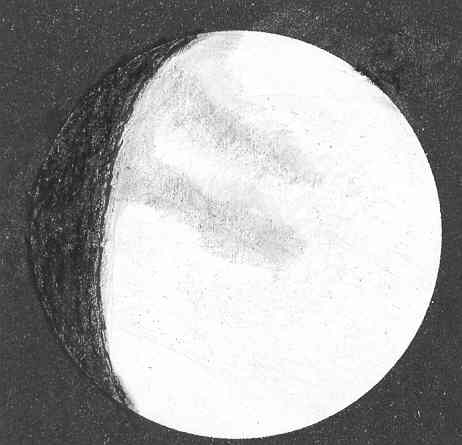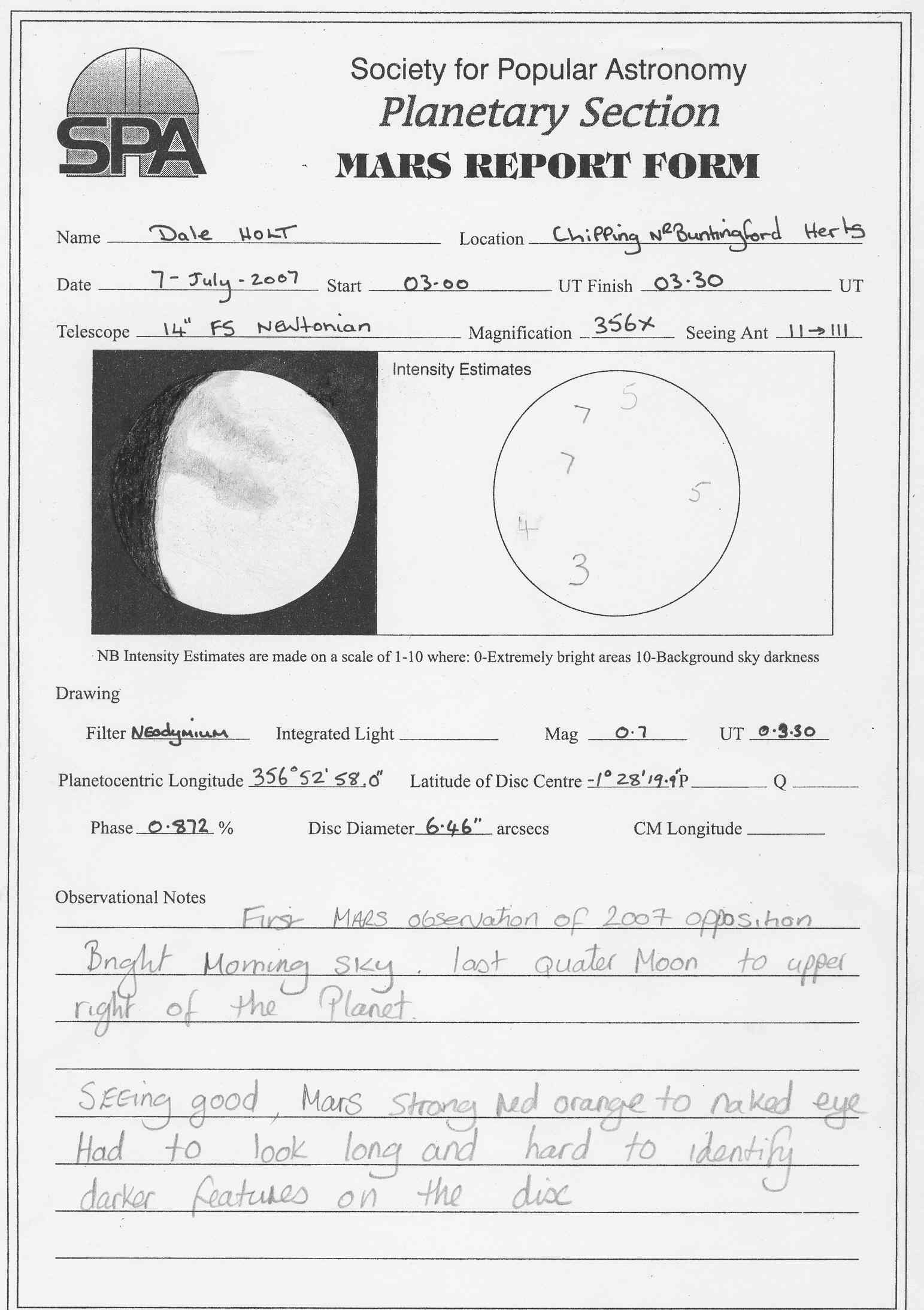
Mars opposition 2007-2008
By Kris Smet
I started observing Mars early in July to make the most of the opposition in
December when the planet’s disk reached almost 16“. However the first few sketches
may not look like much, I believe making the sketches helped me gain more experience
over the months. Putting the colour of mars on paper was much harder than I thought
it would be, I’ve tried a few different colours but kept changing them because I
wasn’t completely happy with it. The last sketch in my opinion looks most as how
mars appears to my eye in the scope. (All sketches were done with my 8” f/5
reflector on equatorial mount btw, I didn’t took the tube from the dobson base until
October though.)
All sketches are made outside sitting at the scope, with plain A4 printer-paper on a
clipboard on my lap. After the scope is brought back inside I work the sketch out
with colours and scan them in on my computer. The only ‘processing’ I (sometimes) do
is adjusting the brightness and sharpness levels a bit to look a bit more
eyepiece-like.
If you look very closely you can see the small disappearing south polar cap on the
first 5 sketches, after that I couldn’t detect it anymore. During September and the first part of October the north polar hood appeared bluish to me, but it seemed to disappeared and on the 14 October sketch the hood doesn’t show any blue.
While Mars was showing me it’s so called ‘boring side’ during September and October
(accept 5/10 & 31/10) I had the impression that the area south of mare Sirenum,
Cimmerium and Mare Tyrrherium was brighter and more yellow than the desert plains
laying south of them.
In December I had some very good views of the Syrtis Major region in which I could
see some detail. I had to wait until early 2008 to get my first view of the Solis
Lacus region, because whenever this side was facing earth I was clouded out :p
I hope to get more viewing time during January, February and perhaps March to make
another ‘collage’ of Mars sketches.
